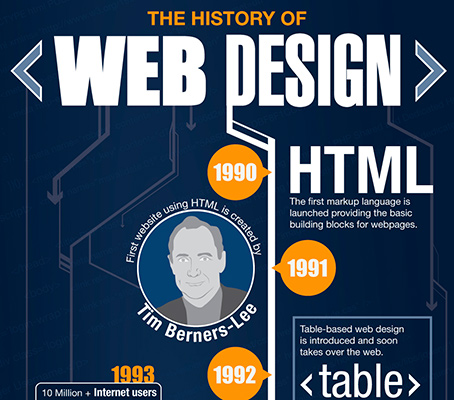The Development Of Internet Site Style: From Past To Present
The Development Of Internet Site Style: From Past To Present
Blog Article
Material By-Carstens Singer
In the past, websites were easy and concentrated on info. Navigating was straight, and layout was for desktops. Now, customer experience is vital. Information overviews layouts for easy navigation. Responsive layouts suit various tools. Today, dark mode reduces stress, and minimalist menus enhance navigating. Interactive functions involve users, and vibrant visuals attract attention. AI combination improves involvement. See just how style has actually progressed to enhance your on the internet trip.
Early Days of Website Design
In the early days of web design, simplicity preponderated. Internet sites were fundamental, with minimal colors, fonts, and layouts. The focus got on providing information instead of showy visuals. Individuals accessed the web via sluggish dial-up links, so rate and performance were vital.
Navigating food selections were straightforward, typically situated at the top or side of the web page. Websites were made for home computer, as mobile browsing wasn't yet common. Material was king, and designers prioritized simple readability over intricate style elements.
HTML was the main coding language utilized, and developers needed to function within its restraints. Computer animations and interactive attributes were minimal compared to today's standards. Websites were static, with little dynamic content or personalized individual experiences.
Surge of User-Focused Style
With the advancement of internet site style, a shift towards user-focused layout concepts has ended up being significantly famous. Today, producing websites that prioritize individual experience is crucial for involving site visitors and accomplishing organization objectives. User-focused design involves understanding the demands, preferences, and habits of your target audience to tailor the website's layout, web content, and features as necessary.
Designers currently perform thorough study, such as user surveys and use screening, to gather understandings and responses straight from customers. This data-driven method aids in developing instinctive navigation, clear calls-to-action, and visually attractive user interfaces that resonate with visitors. By placing the individual at the center of the layout procedure, websites can deliver a much more personalized and satisfying experience.
Receptive style has likewise emerged as a vital aspect of user-focused style, ensuring that sites are enhanced for various devices and display sizes. This versatility boosts access and functionality, catering to the varied methods users interact with web sites today. Basically, the rise of user-focused style symbolizes a change in the direction of creating electronic experiences that prioritize the demands and expectations of completion customer.
Modern Trends in Website Design
Explore the current patterns forming web design today. One prominent trend is dark setting style, providing a sleek and contemporary look while reducing eye pressure in low-light environments. Another essential trend is minimal navigating, simplifying menus and improving customer experience by focusing on essential elements. Incorporating micro-interactions, such as animated buttons or scrolling results, can produce a much more engaging and interactive internet site. Responsive design stays crucial, ensuring seamless user experiences across various devices. Additionally, utilizing bold typography and asymmetrical layouts can include visual interest and accentuate specific web content.
Incorporating AI technology, like chatbots for customer support or personalized suggestions, improves individual interaction and streamlines procedures. Access has likewise become a considerable pattern, with designers focusing on comprehensive layout techniques to accommodate varied individual requirements. Welcoming sustainability by optimizing website performance for rate and effectiveness is one more emerging pattern in web design. Teaming up with user responses and information analytics to repeat and enhance layout continually is essential for staying appropriate in the ever-evolving electronic landscape. By accepting https://www.business2community.com/digital-marketing/4-tips-for-a-strategic-cpg-digital-marketing-campaign-and-the-trends-to-back-them-up-02443305 , you can develop a visually appealing, straightforward site that reverberates with your target market.
https://keegangafav.dm-blog.com/29957225/understanding-the-art-of-social-network-advertising-and-marketing-advice-for-success
As you reflect on the advancement of site layout from the very early days to now, you can see just how user-focused layout has become the driving pressure behind contemporary trends.
Accept the trip of change and adaptation in website design, always keeping the customer experience at the forefront.
Stay existing with the latest fads and technologies, and never ever stop evolving your strategy to produce aesthetically sensational and straightforward sites.
Progress, adjust, and develop - the future of website design is in your hands.
